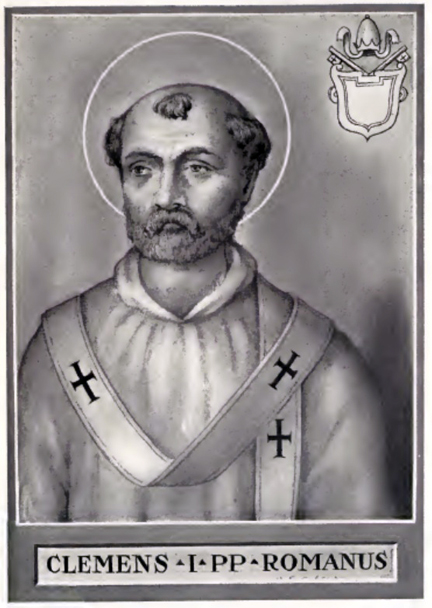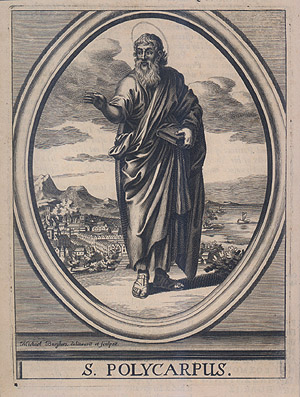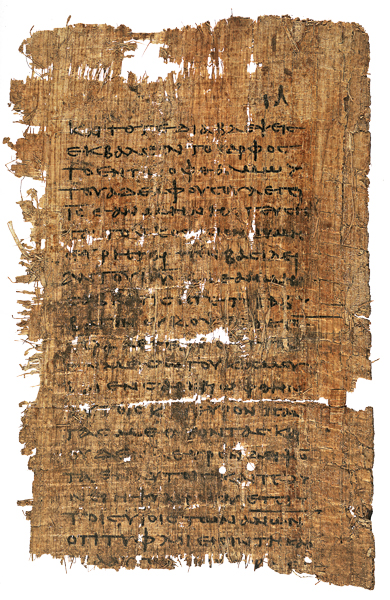|
2 Clement
The Second Epistle of Clement ( grc, Κλήμεντος πρὸς Κορινθίους, Klēmentos pros Korinthious, from Clement to Corinthians), often referred to as 2 Clement (pronounced "Second Clement"), is an early Christian writing. It was at one point possibly considered canonical by the Coptic Orthodox Church. Authorship 2 Clement was traditionally believed to have been an epistle to the Christian Church in Corinth written by Clement of Rome sometime in the late 1st century. However, 4th-century bishop Eusebius, in his historical work, says that there was ''one'' recognized epistle of Clement (namely the so-called First Epistle of Clement). He expresses doubt about the authenticity of a second epistle (see below). Similar doubts were also expressed by Jerome in the 5th century. Modern scholars believe that Second Clement is actually a sermon written around 95–140 CE by an anonymous author, one who was not Clement of Rome. Nonetheless, scholars still generally refer t ... [...More Info...] [...Related Items...] OR: [Wikipedia] [Google] [Baidu] |
Pope Clement I
Pope Clement I ( la, Clemens Romanus; Greek: grc, Κλήμης Ῥώμης, Klēmēs Rōmēs) ( – 99 AD) was bishop of Rome in the late first century AD. He is listed by Irenaeus and Tertullian as the bishop of Rome, holding office from 88 AD to his death in 99 AD. He is considered to be the first Apostolic Father of the Church, one of the three chief ones together with Polycarp and Ignatius of Antioch. Few details are known about Clement's life. Clement was said to have been consecrated by Peter the Apostle, and he is known to have been a leading member of the church in Rome in the late 1st century. Early church lists place him as the second or third bishop of Rome after Peter. The ''Liber Pontificalis'' states that Clement died in Greece in the third year of Emperor Trajan's reign, or 101 AD. Clement's only genuine extant writing is his letter to the church at Corinth ( 1 Clement) in response to a dispute in which certain presbyters of the Corinthian church had been deposed. ... [...More Info...] [...Related Items...] OR: [Wikipedia] [Google] [Baidu] |
Book Of Isaiah
The Book of Isaiah ( he, ספר ישעיהו, ) is the first of the Latter Prophets in the Hebrew Bible and the first of the Major Prophets in the Christian Old Testament. It is identified by a superscription as the words of the 8th-century BCE prophet Isaiah ben Amoz, but there is extensive evidence that much of it was composed during the Babylonian captivity and later. Johann Christoph Döderlein suggested in 1775 that the book contained the works of two prophets separated by more than a century, and Bernhard Duhm originated the view, held as a consensus through most of the 20th century, that the book comprises three separate collections of oracles: Proto-Isaiah ( chapters 1– 39), containing the words of the 8th-century BCE prophet Isaiah; Deutero-Isaiah ( chapters 40– 55), the work of an anonymous 6th-century BCE author writing during the Exile; and Trito-Isaiah ( chapters 56– 66), composed after the return from Exile. Isaiah 1– 33 promises judgment and restoration f ... [...More Info...] [...Related Items...] OR: [Wikipedia] [Google] [Baidu] |
Apostolic Fathers
The Apostolic Fathers, also known as the Ante-Nicene Fathers, were core Christian theologians among the Church Fathers who lived in the 1st and 2nd centuries AD who are believed to have personally known some of the Twelve Apostles or to have been significantly influenced by them. Their writings, though widely circulated in early Christianity, were not included in the canon of the New Testament. Many of the writings derive from the same time period and geographical location as other works of early Christian literature which came to be part of the New Testament. Background The label ''Apostolic Fathers'' has been applied to these writers only since the 17th century, to indicate that they were thought of as representing the generation that had personal contact with the Twelve Apostles. The earliest known use of the term "Apostolic(al) Fathers" was by William Wake in 1693, when he was chaplain in ordinary to King William and Queen Mary of England. According to the ''Catholic Ency ... [...More Info...] [...Related Items...] OR: [Wikipedia] [Google] [Baidu] |
Apocryphal Epistles
Apocrypha are works, usually written, of unknown authorship or of doubtful origin. The word ''apocryphal'' (ἀπόκρυφος) was first applied to writings which were kept secret because they were the vehicles of esoteric knowledge considered too profound or too sacred to be disclosed to anyone other than the initiated. ''Apocrypha'' was later applied to writings that were hidden not because of their divinity but because of their questionable value to the church. In general use, the word ''apocrypha'' has come to mean "false, spurious, bad, or heretical". Biblical apocrypha are a set of texts included in the Septuagint and the Latin Vulgate, but not in the Hebrew Bible. While Catholic tradition considers some of these texts to be deuterocanonical, and the Orthodox Churches consider them all to be canonical, Protestants consider them apocryphal, that is, non-canonical books that are useful for instruction. Luther's Bible placed them in a separate section in between the Old Test ... [...More Info...] [...Related Items...] OR: [Wikipedia] [Google] [Baidu] |
Pseudo-Clementine Literature
Clementine literature (also called Clementina, Pseudo-Clementine Writings, Kerygmata Petrou, Clementine Romance) is the name given to the religious romance which purports to contain a record made by one Clement (whom the narrative identifies as both Pope Clement I, and Domitian's cousin Titus Flavius Clemens) of discourses involving the Apostle Peter, together with an account of the circumstances under which Clement came to be Peter's travelling companion, and of other details of Clement's family history. The author is sometimes called Pseudo-Clement (as distinct from Pope Clement I). Overview Two versions of this romance have survived: one version is called the ''Clementine Homilies'' (''H''), which consists of 20 books and exists in the original Greek; the other is called the ''Clementine Recognitions'' (''R''), for which the original Greek has been lost, but exists in a Latin translation made by Tyrannius Rufinus (died 410). Two later epitomes of the ''Homilies'' also exist, ... [...More Info...] [...Related Items...] OR: [Wikipedia] [Google] [Baidu] |
Coptic Gospel Of Thomas
The Gospel of Thomas (also known as the Coptic Gospel of Thomas) is an extra-canonical sayings gospel. It was discovered near Nag Hammadi, Egypt, in December 1945 among a group of books known as the Nag Hammadi library. Scholars speculate that the works were buried in response to a letter from Bishop Athanasius declaring a strict canon of Christian scripture. Scholars have proposed dates of composition as early as 60 AD and as late as 250 AD. Since its discovery, many scholars have seen it as evidence in support of the existence of a "Q source" which might have been very similar in its form as a collection of sayings of Jesus without any accounts of his deeds or his life and death, referred to as a sayings gospel. The Coptic language text, the second of seven contained in what modern-day scholars have designated as Nag Hammadi Codex II, is composed of 114 sayings attributed to Jesus. Almost two-thirds of these sayings resemble those found in the canonical gospels and its ''e ... [...More Info...] [...Related Items...] OR: [Wikipedia] [Google] [Baidu] |
Clement Of Alexandria
Titus Flavius Clemens, also known as Clement of Alexandria ( grc , Κλήμης ὁ Ἀλεξανδρεύς; – ), was a Christian theologian and philosopher who taught at the Catechetical School of Alexandria. Among his pupils were Origen and Alexander of Jerusalem. A convert to Christianity, he was an educated man who was familiar with classical Greek philosophy and literature. As his three major works demonstrate, Clement was influenced by Hellenistic philosophy to a greater extent than any other Christian thinker of his time, and in particular, by Plato and the Stoics. His secret works, which exist only in fragments, suggest that he was familiar with pre-Christian Jewish esotericism and Gnosticism as well. In one of his works he argued that Greek philosophy had its origin among non-Greeks, claiming that both Plato and Pythagoras were taught by Egyptian scholars. Clement is usually regarded as a Church Father. He is venerated as a saint in Coptic Christianity, Eastern Ca ... [...More Info...] [...Related Items...] OR: [Wikipedia] [Google] [Baidu] |
Greek Gospel Of The Egyptians
The Greek ''Gospel of the Egyptians'' is an early Christian religious text. Its title is adopted from its opening line. Dating The Greek Gospel of the Egyptians (which is quite distinct from the later, wholly Gnostic Coptic Gospel of the Egyptians), perhaps written in the second quarter of the 2nd century, was already cited in Clement of Alexandria's miscellany, the ''Stromata'', where quotations give us many of the brief excerpts that are all that remain; it was also mentioned by Hippolytus, who alludes to "these various changes of the soul, set forth in the Gospel entitled according to the Egyptians" and connects the ''Gospel of the Egyptians'' with the Gnostic Naassene sect. Later, that 4th-century collector of heresies, Epiphanius of Salamis, asserts that the Sabellians made use of this gospel; though it is unlikely that he had any firsthand information about Sabellius, who taught in the early 3rd century. The euphemism, the Word ''logos'', as an appellation of the Saviour ... [...More Info...] [...Related Items...] OR: [Wikipedia] [Google] [Baidu] |
Cassianus
John Cassian, also known as John the Ascetic and John Cassian the Roman ( la, Ioannes Eremita Cassianus, ''Ioannus Cassianus'', or ''Ioannes Massiliensis''; – ), was a Christian monk and theologian celebrated in both the Western and Eastern churches for his mystical writings. Cassian is noted for his role in bringing the ideas and practices of early Christian monasticism to the medieval West. Biography Cassian was born around 360, most likely in the region of Scythia Minor (now Dobruja, a historical region shared today by Romania and Bulgaria), although some scholars assume a Gallic origin. The son of wealthy parents, he received a good education: his writings show the influence of Cicero and Persius. He was bilingual in Latin and Greek. Cassian mentions having a sister in his first work, the ''Institutes'', with whom he corresponded in his monastic life; she may have ended up with him in Marseilles. As a young adult he traveled to Palestine with an older friend Germanus, w ... [...More Info...] [...Related Items...] OR: [Wikipedia] [Google] [Baidu] |
Gospel Of Peter
The Gospel of Peter ( grc, κατά Πέτρον ευαγγέλιον, kata Petron euangelion), or the Gospel according to Peter, is an ancient text concerning Jesus Christ, only partially known today. It is considered a non-canonical gospel and was rejected as apocryphal by the Church's synods of Carthage and Rome, which established the New Testament canon. It was the first of the non-canonical gospels to be rediscovered, preserved in the dry sands of Egypt. A major focus of the surviving fragment of the Gospel of Peter is the passion narrative, which ascribes responsibility for the crucifixion of Jesus to Herod Antipas rather than to Pontius Pilate. Composition Authorship The Gospel of Peter explicitly claims to be the work of Saint Peter: However, scholars generally agree that the Gospel of Peter is pseudepigraphical (bearing the name of an author who did not actually compose the text). The true author of the gospel remains a mystery. Although there are parallels ... [...More Info...] [...Related Items...] OR: [Wikipedia] [Google] [Baidu] |
Idolatry
Idolatry is the worship of a cult image or "idol" as though it were God. In Abrahamic religions (namely Judaism, Samaritanism, Christianity, the Baháʼí Faith, and Islam) idolatry connotes the worship of something or someone other than the Abrahamic god as if it were God. In these monotheistic religions, idolatry has been considered as the "worship of false gods" and is forbidden by texts such as the Ten Commandments. Other monotheistic religions may apply similar rules. For instance, the phrase ''false god'' is a derogatory term used in Abrahamic religions to indicate cult images or deities of non-Abrahamic Pagan religions, as well as other competing entities or objects to which particular importance is attributed. Conversely, followers of animistic and polytheistic religions may regard the gods of various monotheistic religions as "false gods" because they do not believe that any real deity possesses the properties ascribed by monotheists to their sole deity. Atheists, wh ... [...More Info...] [...Related Items...] OR: [Wikipedia] [Google] [Baidu] |






_-_Foto_G._Dall'Orto.jpg)

